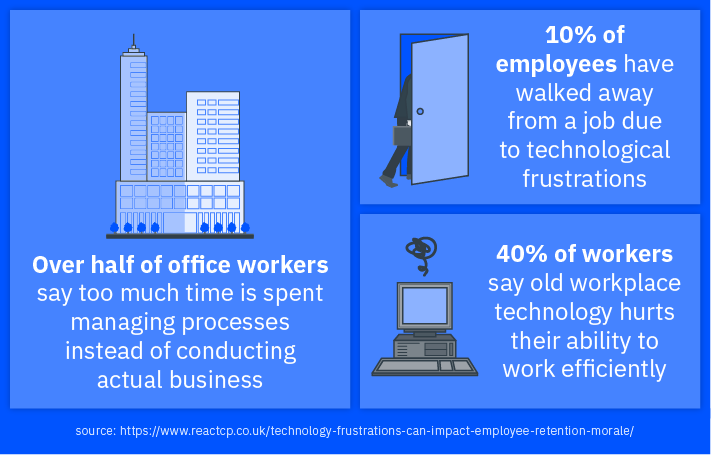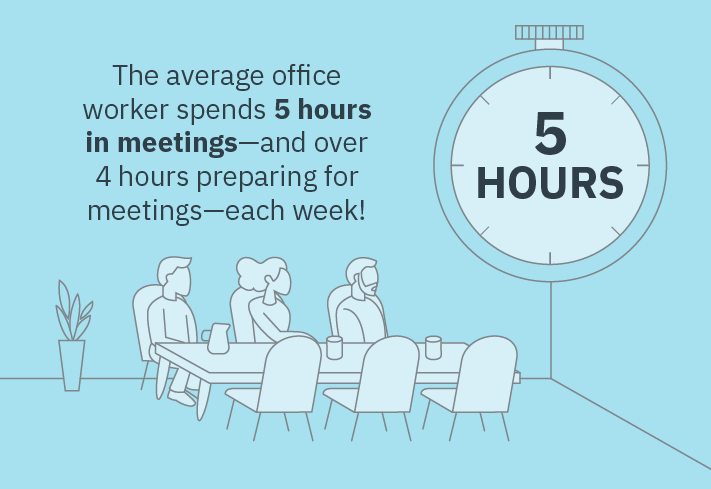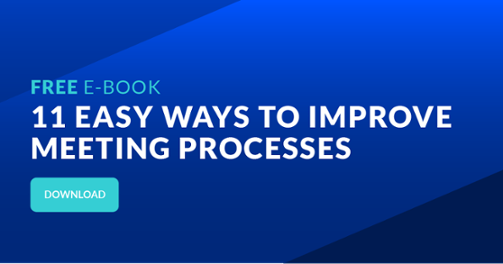When you think about employee retention, does your mind go to things like in-office perks, benefits, and salaries?
Time and time again, it's been observed that these actually aren't the things that convince employees to stay or to leave.What does sway this decision is what their workplace does to make them feel supported, productive, and fulfilled.
Employees leave when they feel their workplace isn’t making an effort to keep up with and empower their future.
There’s an observable link between workplace technology and employee retention. Here’s how to use tech to improve employee retention—and what it’s going to cost you if you choose to ignore it.
The link between workplace tech and employee retention
Office technology choices can have a profound impact on various aspects of the workplace, including work success, company culture, productivity, employee happiness, and, unsurprisingly, employee retention. The right technology can create a positive work environment that fosters growth, collaboration, and innovation, ultimately leading to higher employee satisfaction and retention rates.
When employees have access to modern and efficient office technology, they can perform their tasks more effectively and efficiently. This not only improves their productivity but also boosts their confidence and job satisfaction. By investing in the right tools and software, businesses can empower their employees to work smarter, not harder, and create a sense of fulfillment in their roles.
Office technology is closely tied to employee retention because it demonstrates a company's commitment to innovation and growth. By investing in modern technology, organizations show their employees that they are forward-thinking and willing to adapt to the ever-changing business landscape. As a result, employees are more likely to stay with the company, as they see it as a place where they can grow and thrive professionally.
Employees have high expectations for workplace tech
Millennials, who will make up 75 percent of the workforce by 2025, and the Gen Z workers who are just entering the workforce have spent all or most of their lives in the presence of fast, easy internet access; smart, portable devices; and constant connectivity to each other and the word at large. Who could blame them for expecting to have access to these same technological advancements in the workplace?
Employee expectations for technologies and digital strategies in the workplace are rapidly outpacing what’s available at many organizations. It’s this imbalance that encourages much of today’s top talent to seek employment somewhere (else) that cares about keeping up with modern advancements that meet their needs, fuel their potential, and support their success.
Bureaucracy often keeps IT from meeting worker expectations
Most workplaces agree that, today, technology is necessary to communicate, schedule important meetings, work remotely, and carry out tons of day-to-day tasks with better efficiency and productivity than ever before.
Unfortunately, IT teams often have their hands tied when it comes to keeping up with modern tech because of security concerns, fatigue over constantly testing and trialing the “next big thing,” inefficient resources to manage the increase in maintenance, existing legacy systems that keep them locked into certain outdated processes and workflows, and more.

Outdated technology is gonna cost you—big time
Whatever the reason, when businesses stick to outdated technology, the only downside isn’t just that it keeps employees from doing their jobs with efficiency. Outdated tech insults employee intelligence, tests their patience, and instills feelings that their happiness and success isn’t worth the time and expense of a tech upgrade—all feelings which push them to look for a more satisfying position that does.
And this turnover is going to cost you.
On average, replacing a single employee costs businesses about $39,600 in lost productivity and hiring logistics. Here’s where that cost comes from:
- Decreased productivity while getting a new employee up to speed (28 weeks): $32,623
- Recruitment fees: $588
- Advertising the opening: $515
- Temp workers: $4,687
- Time spent interviewing: $993
- HR time spent: $253
It’s time to show employees that you value them enough to invest in new technology that makes them efficient, successful, and—in turn—stick around.
The best workplace technology for increasing employee retention
With this mix of new high- and low-tech technologies, businesses can drastically reduce friction, frustration, and turnover in the workplace.
Employee satisfaction polling and predictive analytics
Do you know if your employees are satisfied at work? If you don’t—or you’re making assumptions based on a gut feeling—there’s a better way to handle happiness.
Employee satisfaction is a crucial aspect of any successful organization. It directly impacts productivity, engagement, and ultimately, employee retention. However, relying on gut feelings or assumptions can lead to misjudgments and ineffective strategies for improving satisfaction levels.
To truly understand employee satisfaction, it is essential to gather accurate and reliable data. One effective way to achieve this is through the use of employee satisfaction polling software. Tools like TINYpulse, Workhuman, and Polly allow organizations to easily and regularly collect feedback from employees, providing valuable insights into their overall satisfaction levels.
By implementing employee satisfaction polling software, businesses can gain a deeper understanding of their employees' needs, concerns, and areas for improvement. This data-driven approach allows organizations to make informed decisions and implement targeted strategies to enhance employee satisfaction and retention.
But gathering data alone is not enough. To effectively utilize the collected feedback, organizations need to leverage HR analytics platforms like Watsonx by IBM. These platforms can analyze the data and identify patterns that indicate employees who may be at risk of leaving the company. Armed with this knowledge, organizations can proactively address concerns and implement retention efforts in a focused and strategic manner.
Employee reward and recognition platforms
Employees who participate in recognition and/or reward programs report enjoying their employee experience more than those who don't. In fact, lack of recognition is not only a leading reason employees leave their jobs but also one of the main contributors to decreased morale and productivity. To address this issue and improve employee retention, it is essential for organizations to automate employee recognition using software like WorkTango and Bucketlist.
These platforms offer a convenient and streamlined way to show worker appreciation and create a culture of recognition within the company. With these tools, managers can easily acknowledge and reward employees for their hard work and achievements. Whether it's a simple thank-you note or a monetary reward, automated recognition systems ensure that every employee receives the recognition they deserve.
By automating employee recognition, organizations can eliminate the risk of oversight or favoritism and ensure that all employees are treated fairly. This not only boosts morale and job satisfaction but also fosters a sense of belonging and loyalty among employees. When employees feel valued and appreciated, they are more likely to stay with the company and contribute to its success.
Flexible workspaces
Modern, flexible workspaces that allow employees to work anytime, anywhere, and on any device are already becoming the norm around the world. Which is great, considering they’ve been shown to increase employee retention. In fact, some workers say they’d choose the ability to work in a more flexible manner over a raise! (Plus, it could reduce overhead for you.)
Flexibility can mean anything from freedom to move around the office to working from home to working nontraditional hours.
Whatever combination you find that works for you; try communication technology like Slack or Microsoft Teams, video meeting software like Google Meet and Jitsi Meet, and cloud-based file sharing like Google Drive to allow workers to keep in touch even whether they’re working outside the office or outside standard business hours.
Modern meeting experience software
Speaking of modernizing the meeting experience—that doesn’t only apply to workers outside of the office.
There are 25 million meetings every day in the U.S. The average employee spends about 10 hours preparing for and attending these meetings every week. Any tools you can use to make the meeting experience more productive will be worth their weight in gold.
Try a modern meeting management software like AskCody to take the frustration out of meeting planning and hosting, streamline visitor management, and gain meeting insights that strengthen your knowledge about space and resource utilization.
An easier meeting experience can do a lot to reduce workplace stress, pave the path for more effective communication, and overall improve employee happiness and retention.

The link between employee retention and new technology in the workplace isn’t always obvious, but it’s growing increasingly strong.
Use technology to create a working environment where employees feel satisfied, recognized, trusted, and productive—and watch your employee retention soar.
Conclusion - uncovering the link between workplace tech and employee retention
The link between workplace technology and employee retention is undeniable. Employees have high expectations for modern technology in the workplace, and outdated tech can lead to frustration and turnover. Investing in new technology that improves efficiency and supports employee success is not only a way to retain valuable talent, but also to save on the costs associated with employee turnover.
By utilizing tools such as employee satisfaction polling, recognition platforms, flexible workspaces, and modern meeting experience software, businesses can create a working environment that fosters satisfaction, productivity, and retention.
Embracing technology in the workplace is crucial for keeping up with employee expectations and ensuring their long-term commitment. So, don't ignore the power of workplace tech if you want to improve employee retention and create a thriving workforce.




